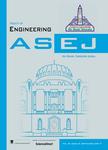版权所有:内蒙古大学图书馆 技术提供:维普资讯• 智图
内蒙古自治区呼和浩特市赛罕区大学西街235号 邮编: 010021

作者机构:M Kumarasamy Coll Engn Autonomous Dept Elect & Commun Engn Karur 639113 Tamil Nadu India
出 版 物:《AIN SHAMS ENGINEERING JOURNAL》 (Ain Shams Eng. J.)
年 卷 期:2025年第16卷第1期
核心收录:
学科分类:12[管理学] 1201[管理学-管理科学与工程(可授管理学、工学学位)] 08[工学]
主 题:FIR filter CNN Nikhilam Sutra Karatsuba algorithm Filter coefficient Fast Carry Switching Adder Kogge-Stone Adder
摘 要:This research paper explains the design process of the 8 x 8 Vedic multipliers based on the UrdhvaTiryagbhyam Sutra in combination with the Nikhilam Sutra and the Karatsuba algorithm. To effectively generate a 16-bit product, the used architecture consists of four four-by-four Vedic modules, an 8:1 carry-save adder, and two nine-bit binary adders. The UrdhvaTiryagbhyam approach splits multiplications into pieces, the Nikhilam Sutra uses the concept of binary complements, and the Karatsuba algorithm offers improvements in large numbers of multiplications. The proposed addition microarchitecture, which consists of using a Fast Carry Switching Adder and the Kogge-Stone Adder with associated selection signals and speculative logic, improves carry propagation time. The ability of the Vedic multiplier is tested within an FIR filter and a CNN processing element, revealing significant enhancements in speed and efficiency. Importantly, the proposed multiplier based on the modification of Vedic Nikhilam yields the lowest power consumption (248.93 mW), the lowest delay (27.95 ns), and the lowest PDP (6.96 pJ), thus making it appropriate for usage in HPC related to signal processing and neural network computations. Moreover, the developed FIR filter for the CNN and the EEG signal datasets were employed to detect seizures and Alzheimer s disease. The incorporation of the Vedic multiplier into the CNN framework reveals the application of the proposed idea in the field of biomedical signal processing with improved computational speed and accuracy. The results corroborate the multiplier s efficiency in decreasing the computational complexity and enhancing the possibility of real-time analysis of CNN-based systems in healthcare.